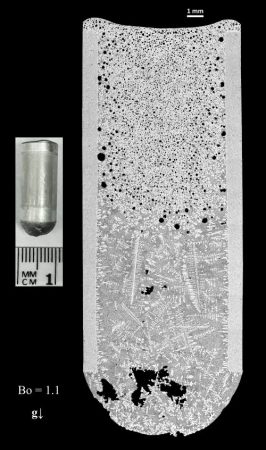Materials Science
Metals | Semiconductors | Polymers and Organics | Glasses and Ceramics | Granular Materials
The Microgravity Materials Science Discipline conducts experiments on the International Space Station designed to improve our understanding of materials processing and properties. This scientific understanding is then applied to Earth-based industrial processes in order to achieve better and/or less expensive materials. The Space Station provides a simplified environment to study materials since there is nearly negligible sedimentation- and buoyancy-driven convection affecting the observations. This helps scientists clarify the role of different effects on materials processes. Many of the materials science experiments will use the Open Science approach, known as Materials Lab. This approach is described in the PSI section below.
Learn more about materials research at Marshall Space Flight Center
Learn more about Materials Science Research Rack-1 on the International Space Station
Learn more about Microgravity Science Glovebox on the International Space Station
Publications
Check out the recent publications from participating NASA scientists, Principal Investigators, and contributors from universities and labs around the world:
Dietrich R, Gutierrez J, Michel M. “Senior Design Project 2020: Solder Joint Testing System.” A design report presented in partial fulfillment for the degree of Bachelor of Science in Materials Science and Engineering, University of Nevada Reno, June 2020 , Jun-2020
A temperature-dependent atomistic-informed phase-field model to study dendritic growth. Kavousi S, Gates A, Jin L, Asle Zaeem M. Journal of Crystal Growth. 2022 Feb.
This paper…
Interactive effects of interfacial energy anisotropy and solute transport on solidification patterns of Al-Cu alloys. Azizi G, Kavousi S, Asle Zaeem M. Acta Materialia. 2022


























